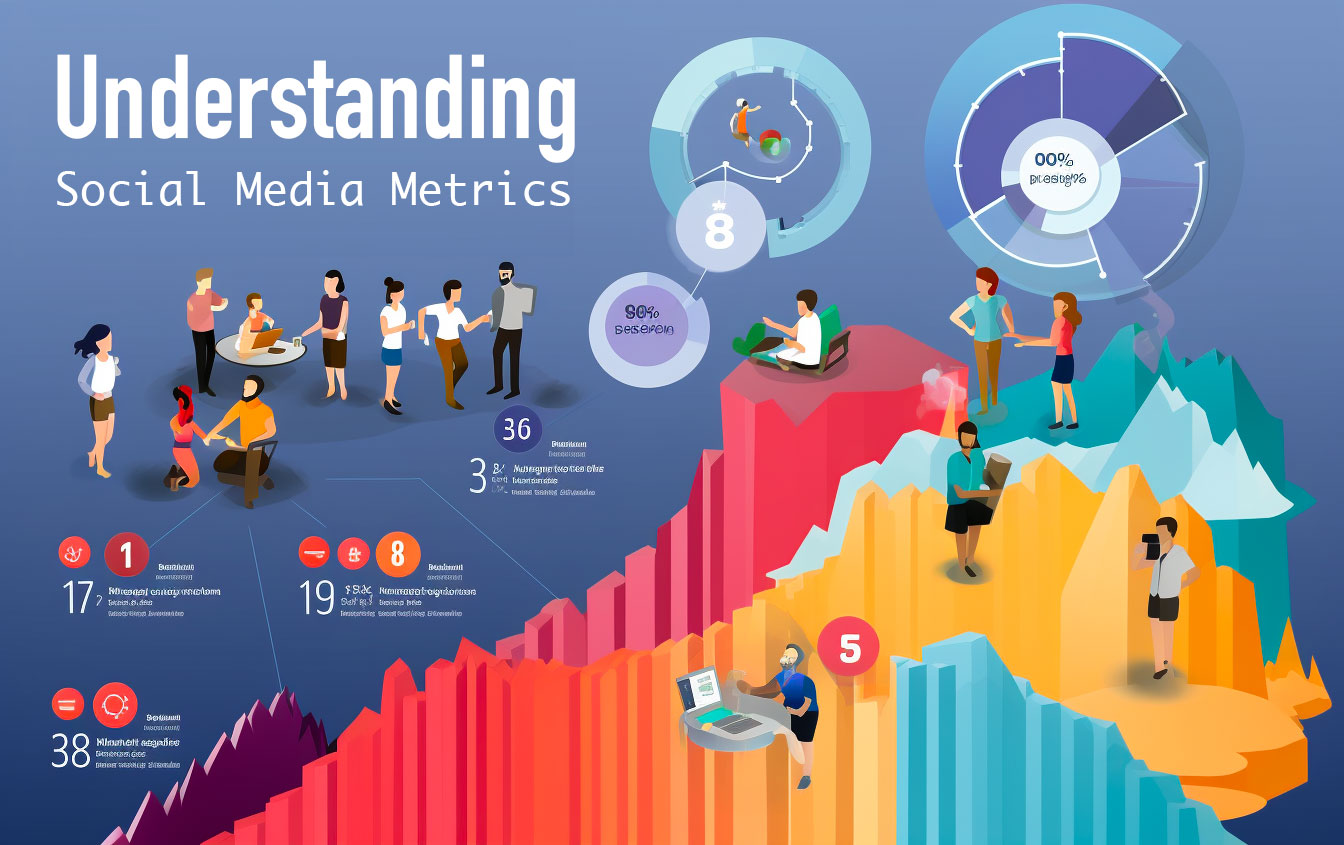
Social media can provide a brand with a daunting amount of data points.We're here to bring clarity by identifying the core social media key performance indicators (KPIs), that genuinely make a difference.
1) Engagement Rate
Engagement rate is an essential barometer of how good your audience thinks your content is. This metric includes likes, comments, shares, and saves. A substantial engagement rate often signals that your content is resonating with your audience. The formula is a simple one: (Engagements / Total followers) x 100. A study by Rival IQ provides an average Instagram engagement rate across all sectors, reported at 1.22%.
2) Reach and Impressions
Reach denotes the unique users who have seen your post, whereas impressions account for the total instances your content has appeared, regardless of subsequent clicks. What's the implication? Monitoring reach and impressions gives insights into your audience size and how often they encounter your content. As Sprout Social suggests, when your impressions outpace your reach, it indicates multiple viewings of your content by your audience.
3) Click-Through Rate (CTR)
CTR represents the proportion of users who follow a specific link relative to the total number of users who view your post or page. A higher CTR usually shows that your content effectively prompts users to act. Calculation: (Clicks / Impressions) x 100 As per WordStream's findings, a CTR of 0.90% on Facebook is considered commendable.
4) Conversion Rate
Conversion rate is a crucial metric if your social media objectives involve encouraging users to perform a particular action, like signing up for a newsletter or making a purchase. Tracking conversions can offer valuable insights into the effectiveness of your social media efforts. Calculation: (Conversions / Total visitors) x 100
5) Follower Growth Rate
This indicator highlights the speed at which your social media profile gains followers. Rapid growth can be a positive signal of a compelling content strategy, whereas a plateau or decline might warrant a reevaluation. Calculation: [(Followers at end of period - Followers at beginning of period) / Followers at beginning of period] x 100
6) Social Share of Voice (SSoV)
SSoV measures the percentage of mentions your brand receives relative to your competitors. It can offer insights into your brand's popularity within your industry. Calculation: (Brand mentions / Total industry mentions) x 100
7) Customer Satisfaction (CSAT)
In the realm of social media, gauging customer satisfaction is paramount. This can be accomplished through direct feedback, surveys, or by analysing the sentiment behind the comments and messages your brand receives. As reported by Oberlo, it's worth noting that 71% of consumers who have a positive interaction with a brand on social media would likely recommend the brand to their peers.
8) Average Response Time
This KPI evaluates the average time your brand takes to respond to messages and comments on social media. A shorter response time typically shows your commitment to promptly addressing customer inquiries.
9) Referral Traffic
Referral traffic signifies the number of visitors arriving at your website via social media platforms. This metric is particularly significant for businesses aiming to bridge their social media profiles with their websites. You can keep tabs on referral traffic from social media by employing Google Analytics.
10) Net Promoter Score (NPS)
NPS helps to assess customer loyalty by asking this simple question: 'On a scale of 0-10, how likely are you to recommend our product/service to a friend or colleague?'. By understanding your customers' inclination to advocate for your brand, you can gain insights into the relationships you're building. Detractors score 0-6, Passive score 7-8 and Promoters 9-10. Calculation: % of Promoters - % of Detractors
Bring It All together
Grasping social media metrics doesn't have to feel like decoding ancient hieroglyphs. With a clear understanding of these KPIs, marketers can acquire practical insights to shape their social media approach. While data is undeniably valuable, it’s of equal importance to maintain authenticity and craft content that speaks to your audience. Data can also show you where the challenge is but will require you to do more work to figure out the “why” and the right solution. For those on the lookout for an efficient way to monitor these metrics, considering social media analytics tools, such as Buzz Radar. Tools that offer real-time data visualisation and insights can bolster your social media and broader digital strategy.
Patrick Charlton Published on July 7, 2023 9:42 am

